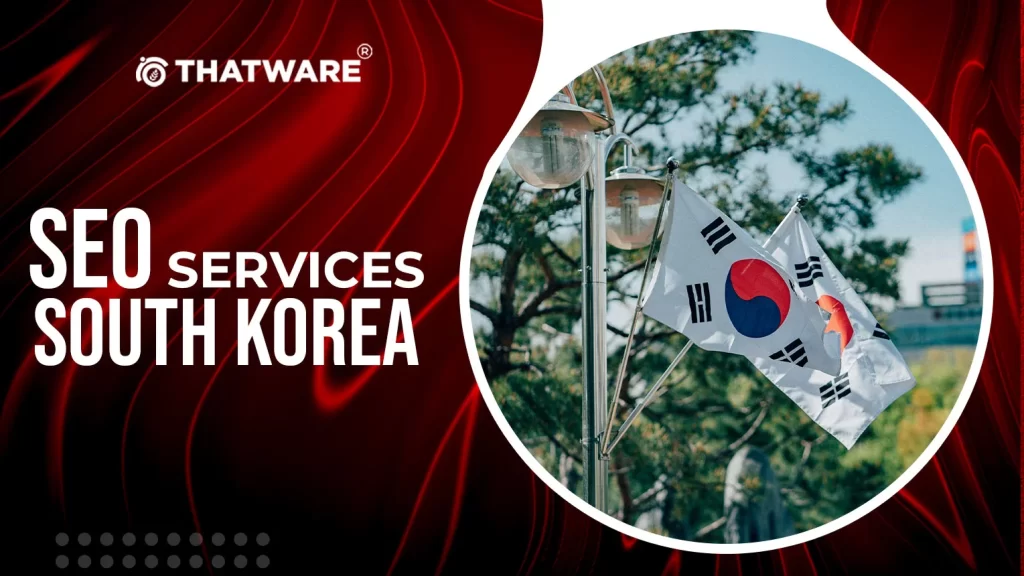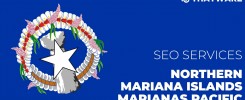GET A FREE CUSTOMIZED SEO AUDIT & DIGITAL MARKETING STRATEGY FOR YOUR BUSINESS IN South KOREA
South Korea, a technological powerhouse, has carved its place as a leader in the global digital landscape. With a population deeply entrenched in technology, the country’s online ecosystem is a dynamic and ever-evolving space. Boasting high-speed internet infrastructure and widespread smartphone usage, South Korea has seamlessly embraced the digital era.

In this digital playground, where connectivity is a way of life, businesses navigate a competitive landscape. The quest for consumer attention is relentless, making it imperative for companies to establish a robust online presence. As South Koreans increasingly turn to the internet for their needs, the role of Search Engine Optimization (SEO) takes center stage in ensuring businesses not only survive but thrive in this highly competitive market.
SEO, the art and science of enhancing a website’s visibility on search engines, becomes a strategic imperative in the South Korean context. The prominence of platforms like Naver and Kakao, coupled with the tech-savvy consumer base, underscores the need for businesses to strategically position themselves in the digital realm. As we delve into the intricacies of SEO in Seoul, it becomes evident that grasping the nuances of the digital landscape is pivotal for businesses seeking success in this high-stakes, tech-driven market.
✨Understanding South Korean Search Engines
A. Dominant Search Engines in South Korea
In the realm of South Korean search engines, two names stand out prominently: Naver and Daum. While Google also maintains a presence, its market share is comparatively modest.
Naver: Often dubbed the “Google of South Korea,” Naver is the undisputed leader in the country’s search engine landscape. Known for its unique algorithm and user interface, Naver has become an integral part of the daily lives of South Koreans. Beyond search, Naver offers a comprehensive platform, including news, blogs, and a Q&A section, contributing to its widespread popularity.
Daum: Although second to Naver in terms of market share, Daum remains a significant player. Daum, along with its web portal and search engine, provides diverse services such as email, news, and community forums. Understanding the dynamics of Daum is crucial for businesses aiming to broaden their reach across South Korean digital channels.
B. Key Differences and Ranking Factors
1. Naver’s Unique Algorithm:
Naver’s algorithm differs significantly from global search engines. It places a strong emphasis on user-generated content, such as blogs and cafes. Understanding and leveraging these features can significantly impact a website’s visibility.
2. Content Quality and Relevance:
Both Naver and Daum prioritize high-quality, relevant content. Crafting content that resonates with the South Korean audience, including language nuances and cultural context, is pivotal for SEO success.
3. Mobile Optimization:
Given South Korea’s mobile-centric culture, search engines prioritize mobile-friendly websites. Ensuring a seamless experience for users accessing content on mobile devices is a key ranking factor.
4. Localized Keywords:
Search queries in South Korea may differ from global trends. Identifying and incorporating localized keywords and terms specific to the South Korean audience enhances search engine visibility.
5. Backlinks and Social Signals:
Backlinks play a crucial role in SEO success. Building high-quality backlinks from reputable South Korean websites and integrating social signals into the SEO strategy contribute to improved rankings.
Navigating the intricacies of South Korean search engines involves understanding the dominance of Naver and Daum, decoding their unique algorithms, and aligning SEO strategies with the preferences and priorities of the local audience. This insight is paramount for businesses seeking effective digital visibility in the competitive South Korean market.
✨Cultural Nuances in SEO
A. Impact of Korean Culture on Search Behavior
South Korea’s rich cultural tapestry significantly influences the way individuals interact with the digital landscape. Understanding these cultural nuances is pivotal for shaping effective SEO strategies that resonate with the South Korean audience.
1. Hierarchy and Respect:
Hierarchy and respect hold significant importance in Korean culture. This is reflected in online behavior, where users may prioritize information from authoritative sources. SEO strategies should align with this cultural norm by establishing credibility and expertise.
2. Community-Oriented Approach:
South Koreans often engage in online communities and forums to share opinions and seek advice. Recognizing the importance of community-driven content and participation is key for businesses aiming to build a connection with the local audience.
3. Visual Appeal and Aesthetics:
South Koreans appreciate visually appealing content. Incorporating high-quality visuals and multimedia elements into web pages enhances user engagement and aligns with the cultural appreciation for aesthetics.
B. Crafting Content Tailored to Local Preferences
1. Language and Tone:
The Korean language has various levels of formality, and using the appropriate tone is crucial. Crafting content that aligns with the cultural expectations of politeness and formality enhances the likelihood of positive audience reception.
2. Storytelling and Narrative:
South Koreans appreciate storytelling and narratives that evoke emotion. Integrating storytelling into content marketing strategies creates a more relatable and compelling brand image.
3. Seasonal and Cultural References:
Referencing cultural events, seasons, and holidays in content demonstrates an understanding of local culture. Aligning promotional activities with significant cultural moments fosters a sense of connection with the audience.
4. Mobile-First Design:
As a society deeply immersed in mobile technology, ensuring that websites are designed for a seamless mobile experience is essential. This aligns with the cultural preference for accessing information on the go.
5. Social Media Engagement:
South Koreans are avid users of social media platforms. Integrating social media into SEO strategies, including engaging content and community interaction, aligns with local preferences and extends the reach of the brand.
Incorporating cultural nuances into SEO practices goes beyond language translation; it involves a deep understanding of the values, behaviors, and preferences of the South Korean audience. By tailoring content and strategies to align with these cultural dynamics, businesses can establish a more meaningful and impactful online presence in this unique digital landscape.
✨Local SEO Strategies
A. Optimizing for Local Search Terms and Keywords
1. Identifying Relevant Local Keywords:
Conduct thorough research to identify keywords and search terms that are specific to the South Korean market. Consider language nuances, cultural references, and regional variations to optimize content for local search intent.
2. Location-Specific Content:
Tailor content to address the needs and interests of a South Korean audience. Incorporate references to local landmarks, events, and colloquial expressions to enhance relevance and resonance.
3. Google My Business Optimization:
Ensure that your Google My Business profile is fully optimized with accurate business information, including address, phone number, and business hours. This is crucial for local search visibility, especially for users utilizing Google in South Korea.
✨On-Page SEO Strategies
A. Optimizing Meta Tags and Headers for the South Korean Audience
1. Title Tags:
Craft compelling and concise title tags that incorporate relevant keywords and resonate with the South Korean audience. Consider the cultural nuances and preferences when creating titles to capture attention effectively.
2. Meta Descriptions:
Write engaging meta descriptions that not only summarize the content but also entice users to click. Utilize persuasive language and highlight unique selling points to encourage user engagement.
3. Headers (H1, H2, H3, etc.):
Structure content with clear and hierarchy-based headers. Use relevant keywords in headers to signal the content’s focus to both users and search engines. This enhances readability and helps search engines understand the content structure.
4. Language and Tone:
Ensure that the language and tone used in meta tags and headers align with the cultural expectations of the South Korean audience. This includes using appropriate levels of formality and addressing potential language nuances.
B. Creating Engaging and Localized Content
1. Language Localization:
Tailor the language of your content to match the linguistic nuances of the South Korean audience. Use local expressions and phrases to connect more authentically with readers.
2. Content Relevance to Local Trends:
Stay updated on local trends, events, and news. Integrate references to these in your content to showcase relevance and demonstrate your understanding of the South Korean context.
3. Multimedia Integration:
South Koreans are known for their appreciation of visuals. Enhance on-page engagement by incorporating high-quality images, infographics, and videos that resonate with the local audience.
4. User-Generated Content:
Encourage user-generated content, such as reviews and testimonials, on your website. This not only adds authenticity to your content but also fosters a sense of community engagement.
5. Mobile-Friendly Design:
Given the mobile-centric nature of the South Korean digital landscape, ensure that your website is optimized for mobile devices. A responsive design enhances user experience and positively impacts SEO.
Incorporating on-page SEO strategies tailored to the South Korean audience involves more than just translation; it requires a deep understanding of cultural nuances and preferences. By optimizing meta tags and headers with a cultural lens and creating engaging, localized content, businesses can effectively capture the attention of the South Korean audience and improve their search engine rankings.

✨Building High-Quality Backlinks
A. Importance of Backlinks in South Korean SEO
Backlinks play a pivotal role in determining the online authority and credibility of a website, and this holds true in the context of South Korean SEO. In the competitive digital landscape of South Korea, where search engines like Naver and Daum dominate, acquiring high-quality backlinks is integral to establishing and improving search rankings.
1. Authority and Trustworthiness:
Search engines in South Korea, particularly Naver, place a strong emphasis on the authority and trustworthiness of websites. Backlinks from reputable and authoritative sources serve as a vote of confidence, signaling to search engines that your content is reliable and valuable.
2. Enhanced Visibility:
Quality backlinks contribute to improved visibility in search results. When reputable South Korean websites link to your content, it increases the likelihood of your pages ranking higher, thereby increasing organic traffic to your site.
3. Localized Relevance:
Backlinks from websites with local relevance carry added weight. Links from South Korean directories, industry-specific platforms, and reputable local businesses strengthen the local relevance of your website, positively impacting SEO.
B. Strategies for Acquiring Quality Backlinks in the Local Context
1. Local Directories and Platforms:
Submit your business to reputable South Korean directories and industry-specific platforms. This not only enhances your online presence but also contributes to building quality backlinks from authoritative sources.
2. Collaborate with Local Influencers:
Identify and collaborate with influencers or thought leaders in your industry who have a strong presence in the South Korean digital space. Their endorsement and link-backs can significantly boost your website’s credibility.
3. Guest Blogging on Local Websites:
Contribute valuable content to local blogs and websites in your industry. Guest blogging establishes your expertise, and the backlinks from these collaborations enhance your website’s authority.
4. Build Relationships with Local Businesses:
Forge partnerships and build relationships with local businesses. Coordinated efforts, such as cross-promotions or joint events, can lead to natural backlinks as businesses reference and link to each other.
5. Monitor and Disavow Toxic Links:
Regularly monitor your backlink profile and disavow any toxic or spammy links. Maintaining a clean and high-quality backlink profile is essential for sustained SEO success.
In the dynamic landscape of South Korean SEO, building high-quality backlinks requires a strategic and localized approach. By emphasizing local relevance, collaborating with influencers, and actively engaging with reputable South Korean platforms, businesses can strengthen their backlink profile and, in turn, enhance their overall SEO performance.
✨Mobile Optimization
A. South Korea’s Mobile-Centric Digital Landscape
In the dynamic realm of South Korea’s digital landscape, mobile devices reign supreme. The country has embraced a mobile-centric culture, with a significant portion of the population relying on smartphones for various aspects of daily life. Understanding and adapting to this mobile-first approach is crucial for businesses aiming to succeed in the South Korean market.
1. High Smartphone Penetration:
South Korea boasts one of the highest smartphone penetration rates globally. A large portion of the population uses smartphones not only for communication but also for browsing, shopping, and accessing a wide range of online services.
2. Mobile-Optimized Apps:
Mobile apps are integral to the South Korean digital experience. From social networking to e-commerce, many activities are conducted through mobile applications. Ensuring that your online presence extends to mobile apps is a strategic consideration for businesses.
3. Mobile Payment Systems:
Mobile payment systems, such as Samsung Pay and KakaoPay, have become deeply ingrained in daily transactions. Businesses that integrate and support these payment methods enhance the overall user experience for mobile users.
B. Ensuring Mobile-Friendly Websites for Better SEO Performance
1. Responsive Web Design:
Implement a responsive web design that adapts seamlessly to various screen sizes. This ensures a consistent and user-friendly experience for visitors accessing your website from different mobile devices.
2. Fast Loading Times:
Mobile users value speed. Optimize your website for fast loading times by compressing images, minimizing code, and leveraging browser caching. This not only improves user experience but is also a ranking factor in search algorithms.
3. Mobile-Friendly Content:
Tailor content for mobile consumption. Ensure that text is readable without zooming, buttons are easily clickable, and multimedia elements are optimized for mobile viewing. This enhances engagement and encourages users to stay on your mobile site.
4. Localized Mobile SEO:
Consider local search behavior and preferences when implementing mobile SEO strategies. Optimize for local keywords and ensure that your mobile site aligns with the cultural and linguistic nuances of the South Korean audience.
5. Google’s Mobile-First Indexing:
Recognize the significance of Google’s mobile-first indexing, which prioritizes the mobile version of a website for search ranking. Ensure that your mobile site provides the same valuable content and functionality as your desktop version.
In the fast-paced digital landscape of South Korea, where mobile devices are the primary gateway to the online world, prioritizing mobile optimization is not just a recommendation but a necessity. By embracing a mobile-friendly approach, businesses can enhance their SEO performance and cater effectively to the preferences of the South Korean mobile audience.
✨Social Media and SEO Synergy
A. Leveraging Social Platforms for SEO Benefits
1. Social Signals and SEO:
Search engines, including those in South Korea, take into account social signals as a factor in determining the relevance and popularity of content. Social shares, likes, and comments contribute to a website’s authority and can positively impact its search engine rankings.
2. Brand Visibility and Recognition:
Active engagement on social media platforms enhances brand visibility. Consistent branding and messaging across social channels contribute to a cohesive online presence, reinforcing the brand’s authority and trustworthiness.
3. Content Amplification:
Social media serves as a powerful channel for content distribution. Sharing blog posts, articles, and multimedia content on social platforms not only expands reach but can also generate backlinks as users share and reference the content.
B. Connecting with the South Korean Audience on Popular Social Networks
1. KakaoTalk:
KakaoTalk is a ubiquitous messaging app in South Korea, with a vast user base. Utilize KakaoTalk for business communication, customer support, and promotional activities. Engaging with users on this platform can enhance brand loyalty and drive traffic to your website.
2. Instagram:
South Koreans have a strong presence on Instagram, making it an ideal platform for visual content. Share visually appealing images and videos related to your brand, products, or services. Use relevant hashtags to increase discoverability.
3. Twitter:
Twitter is widely used for real-time updates and conversations. Engage with your audience through tweets, participate in trending topics, and share industry insights. Regular activity on Twitter can contribute to improved SEO visibility.
4. Naver Blog:
Naver Blog is a popular content-sharing platform in South Korea. Establishing and maintaining a Naver Blog can enhance your online presence, and links from Naver can positively impact your SEO performance on Naver’s search engine.
5. YouTube:
Video content is highly consumed in South Korea. Leverage YouTube to share informative and entertaining videos related to your brand. Optimize video titles, descriptions, and tags with relevant keywords for improved discoverability.
6. Community Engagement:
Actively participate in online communities and forums related to your industry. Answering queries, providing valuable insights, and sharing content within these communities can foster a sense of community engagement and positively impact SEO.
In the interconnected world of social media and SEO, businesses in South Korea can harness the synergy between these two aspects to amplify their online presence. By strategically leveraging popular social platforms and actively engaging with the South Korean audience, businesses can not only enhance their social media presence but also positively influence their SEO performance in this dynamic digital landscape.
✨Conclusion
In the dynamic realm of South Korea’s digital landscape, businesses must embrace effective SEO strategies to succeed online. The dominance of Naver and Daum in search underlines the importance of tailored approaches that consider cultural nuances, local SEO intricacies, and mobile optimization.
Building high-quality backlinks and integrating social media into SEO efforts are pivotal for online credibility and visibility. In this competitive environment, partnering with a trusted SEO service provider is a strategic move. ThatWare, with its proven track record, offers businesses the expertise needed to navigate and excel in the intricate South Korean digital space, ensuring a robust and impactful online presence.


